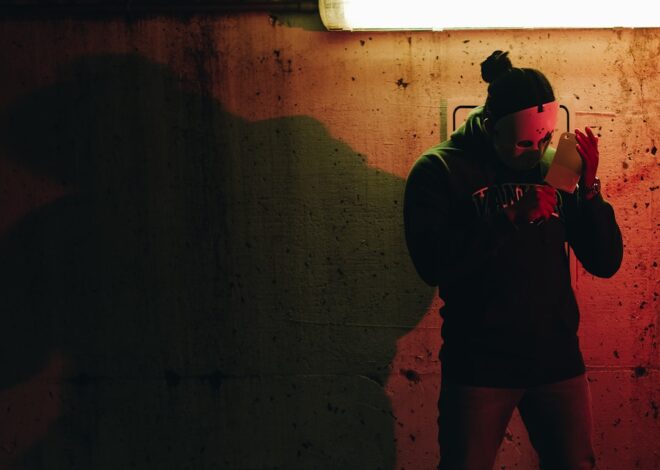
Exploring the Enchanting World of Fantasy Movies
Fantasy films are a genre of cinema that depict imaginary worlds, often featuring elements of magic, mythical creatures, and supernatural phenomena. These movies typically transport viewers to fictional realms that differ significantly from reality, offering a form of escapism and stimulating the imagination. Popular examples include “The Lord of the Rings” series, set in the fictional world of Middle-earth, and the “Harry Potter” franchise, which takes place in a hidden magical society.
The appeal of fantasy movies lies in their ability to present extraordinary narratives and visually striking environments. They often incorporate universal themes such as the struggle between good and evil, the importance of friendship and love, and personal growth. These films frequently showcase advanced special effects and CGI to bring fantastical elements to life, such as dragons, magical spells, or otherworldly landscapes.
Fantasy cinema has a rich history, ranging from adaptations of classic fairy tales to original contemporary stories. The genre has gained significant popularity in recent decades, with many fantasy films becoming major box office successes and cultural phenomena. As technology advances, filmmakers continue to push the boundaries of visual storytelling in fantasy movies, creating increasingly immersive and spectacular on-screen worlds.
Key Takeaways
- Fantasy movies have a unique ability to transport audiences to magical worlds and inspire imagination.
- From classic fairy tales to modern blockbusters, fantasy movies have evolved to captivate audiences with stunning visuals and compelling storytelling.
- The creation of fantasy worlds involves intricate production design, special effects, and costume design to bring the imaginary to life on screen.
- Fantasy movies have a profound impact on audiences, inspiring creativity, and providing an escape from reality.
- Different subgenres of fantasy movies, from high fantasy to urban fantasy, offer diverse storytelling and world-building opportunities for filmmakers.
The Evolution of Fantasy Movies: From Classic Tales to Modern Blockbusters
The Roots of Fantasy
Fantasy movies have their roots in classic tales and folklore that have been passed down through generations. Timeless stories like King Arthur and his knights, as well as enchanting fairy tales from Hans Christian Andersen, have always been a source of inspiration for storytellers and filmmakers.
A New Era of Storytelling
The advent of computer-generated imagery (CGI) and special effects revolutionized the way fantasy movies were made. Filmmakers could now create breathtaking landscapes, mythical creatures, and magical spells that were once only possible in the realm of imagination. This led to the creation of visually stunning and immersive experiences for audiences.
Modern Blockbusters
In recent years, fantasy movies have evolved into modern blockbusters that push the boundaries of visual effects and storytelling. Franchises like “The Hobbit,” “Game of Thrones,” and “Fantastic Beasts” have become a global phenomenon, captivating audiences of all ages with their epic scale and intricate world-building. These films have not only raised the bar for visual effects and production design but have also expanded the scope of storytelling within the genre, exploring deeper themes and narratives that resonate with contemporary audiences.
Creating a Fantasy World: Behind the Scenes of Movie Production

The creation of a fantasy world in movies is a complex and intricate process that involves a team of talented individuals working together to bring the director’s vision to life. From concept art and production design to costume and creature creation, every aspect of movie production plays a crucial role in building a believable and immersive fantasy world. Concept artists and illustrators work closely with the director to visualize the look and feel of the world, creating detailed sketches and paintings that serve as the blueprint for the production design team.
Production designers then bring these concepts to life by building elaborate sets, designing intricate props, and creating stunning visual landscapes that transport audiences to another realm. Costume designers play a crucial role in bringing characters to life in a fantasy world, creating elaborate costumes that reflect the culture, history, and aesthetics of the fictional universe. From intricate armor and regal gowns to otherworldly attire for mythical creatures, costume designers work tirelessly to ensure that every detail is meticulously crafted to enhance the storytelling and immerse audiences in the fantasy world.
In addition to production design and costume creation, creature designers and visual effects artists are responsible for bringing mythical creatures and magical beings to life on screen. Through a combination of practical effects, animatronics, and CGI, these artists create lifelike creatures that interact seamlessly with the human characters, adding an extra layer of realism to the fantasy world.
The Impact of Fantasy Movies: How They Inspire and Transport Audiences
| Metrics | Data |
|---|---|
| Box Office Revenue | 10 billion worldwide |
| Audience Attendance | Millions of viewers |
| Critical Acclaim | Multiple award nominations and wins |
| Fan Engagement | Active online communities and fan events |
| Cultural Impact | Influence on fashion, art, and popular culture |
Fantasy movies have a profound impact on audiences by inspiring them to dream, imagine, and believe in the impossible. These films have the power to transport viewers to fantastical realms where they can escape from the mundane realities of everyday life and embark on epic adventures alongside brave heroes and heroines. Through their captivating storytelling and awe-inspiring visuals, fantasy movies ignite our imagination and instill a sense of wonder that stays with us long after the credits roll.
Whether it’s the empowering message of courage and resilience in “The Chronicles of Narnia” or the enduring themes of friendship and loyalty in “The NeverEnding Story,” fantasy movies have the ability to touch our hearts and inspire us to embrace our own inner hero. Furthermore, fantasy movies have the ability to transcend cultural barriers and connect with audiences from all walks of life. These films often explore universal themes such as love, loss, redemption, and the eternal struggle between good and evil, resonating with viewers on a deeply emotional level.
By immersing audiences in richly detailed worlds filled with magic, mythical creatures, and epic quests, fantasy movies provide an opportunity for escapism and introspection, allowing viewers to reflect on their own lives and find inspiration in the triumphs and struggles of the characters on screen. In this way, fantasy movies have a lasting impact on audiences by sparking their imagination, evoking powerful emotions, and inspiring them to believe in the extraordinary.
Exploring Different Subgenres: From High Fantasy to Urban Fantasy
Fantasy movies encompass a wide range of subgenres that cater to diverse tastes and preferences among audiences. From high fantasy epics set in sprawling kingdoms to urban fantasies grounded in contemporary settings, each subgenre offers a unique take on the fantastical elements that define the genre. High fantasy movies often feature epic quests, mythical creatures, and grand battles set in richly detailed worlds inspired by medieval folklore and mythology.
These films transport audiences to distant realms filled with towering castles, ancient prophecies, and noble heroes on a quest to save the world from darkness. On the other hand, urban fantasy movies blend elements of magic and mythology with modern-day settings, creating a juxtaposition of the ordinary world with extraordinary elements. These films often feature supernatural beings living among humans in bustling cities, navigating hidden realms and ancient conflicts while grappling with everyday challenges.
Urban fantasy movies offer a fresh perspective on the genre by exploring how magic and myth intersect with contemporary society, offering a sense of wonder and enchantment within familiar urban landscapes. Whether it’s the magical underworld of “Harry Potter” or the supernatural mysteries of “The Mortal Instruments,” urban fantasy movies provide a captivating blend of reality and imagination that resonates with audiences.
The Influence of Fantasy Literature on Film Adaptations

The Rich Source Material
From classic novels like J.R.R. Tolkien’s “The Lord of the Rings” to contemporary series like George R.R. Martin’s “A Song of Ice and Fire,” fantasy literature has inspired some of the most beloved and successful film adaptations in cinematic history.
The Challenge of Adaptation
These adaptations often face the challenge of staying true to the source material while also translating the author’s vision onto the screen in a visually compelling way. Authors like J.K. Rowling, Philip Pullman, and C.S. Lewis have created immersive worlds filled with rich characters, intricate mythologies, and compelling narratives that have captivated readers for generations.
Bringing Fantasy to Life
Through meticulous attention to detail, stunning visual effects, and powerful performances from talented actors, film adaptations of fantasy literature have brought these beloved stories to life in ways that continue to inspire new generations of fans.
The Future of Fantasy Movies: Trends and Anticipated Releases
As technology continues to advance and storytelling techniques evolve, the future of fantasy movies looks brighter than ever with exciting trends and anticipated releases on the horizon. With streaming platforms like Netflix, Amazon Prime, and Disney+ investing heavily in original fantasy content, audiences can expect a diverse range of new stories set in fantastical worlds that cater to different tastes and demographics. From epic high fantasy series like “The Wheel of Time” to urban fantasy adaptations like “The Dresden Files,” streaming platforms are poised to become a hub for original fantasy content that pushes boundaries and explores new frontiers within the genre.
Furthermore, advancements in visual effects technology are allowing filmmakers to create even more immersive and realistic fantasy worlds on screen. With groundbreaking techniques in motion capture, virtual production, and CGI rendering, filmmakers are able to bring mythical creatures, magical spells, and breathtaking landscapes to life in ways that were once thought impossible. As a result, audiences can look forward to experiencing even more visually stunning and immersive fantasy worlds that transport them to realms beyond their wildest dreams.
In conclusion, fantasy movies continue to captivate audiences with their timeless tales of heroism, magic, and mythical creatures. From classic fairy tales to modern blockbusters, these films have evolved into visually stunning epics that push the boundaries of storytelling and visual effects. With their ability to inspire imagination, transcend cultural barriers, and resonate with audiences on an emotional level, fantasy movies hold a special place in cinematic history as they continue to transport us to enchanting realms filled with wonder and adventure.
As we look ahead to the future of fantasy movies, we can anticipate even more groundbreaking stories set in fantastical worlds that push boundaries and inspire new generations of fans around the world.
If you’re a fan of fantasy movie genres, you might also be interested in exploring the world of zombie movies. ZombieBay offers a wide range of articles and resources for zombie movie enthusiasts, including reviews, news, and recommendations for must-watch films. Check out their website here to dive into the thrilling and terrifying world of zombie cinema.
FAQs
What are the different subgenres of fantasy movies?
Some of the subgenres of fantasy movies include high fantasy, urban fantasy, dark fantasy, fairy tale fantasy, and historical fantasy.
What are the key elements of a fantasy movie?
Key elements of a fantasy movie include magical or supernatural elements, mythical creatures, otherworldly settings, and a sense of wonder and escapism.
What are some popular examples of fantasy movies?
Popular examples of fantasy movies include “The Lord of the Rings” trilogy, “Harry Potter” series, “The Chronicles of Narnia” series, “Pan’s Labyrinth,” “The Princess Bride,” and “The Wizard of Oz.”
What are some common themes in fantasy movies?
Common themes in fantasy movies include the battle between good and evil, the hero’s journey, the power of imagination, and the importance of friendship and loyalty.
How does fantasy differ from other genres like science fiction or horror?
Fantasy typically involves magical or supernatural elements, while science fiction often focuses on futuristic technology and space exploration. Horror, on the other hand, aims to evoke fear and suspense through supernatural or psychological elements.
What are some characteristics of high fantasy movies?
High fantasy movies often take place in a completely fictional world with its own set of rules and mythology. They typically involve epic quests, mythical creatures, and a struggle between forces of good and evil.


